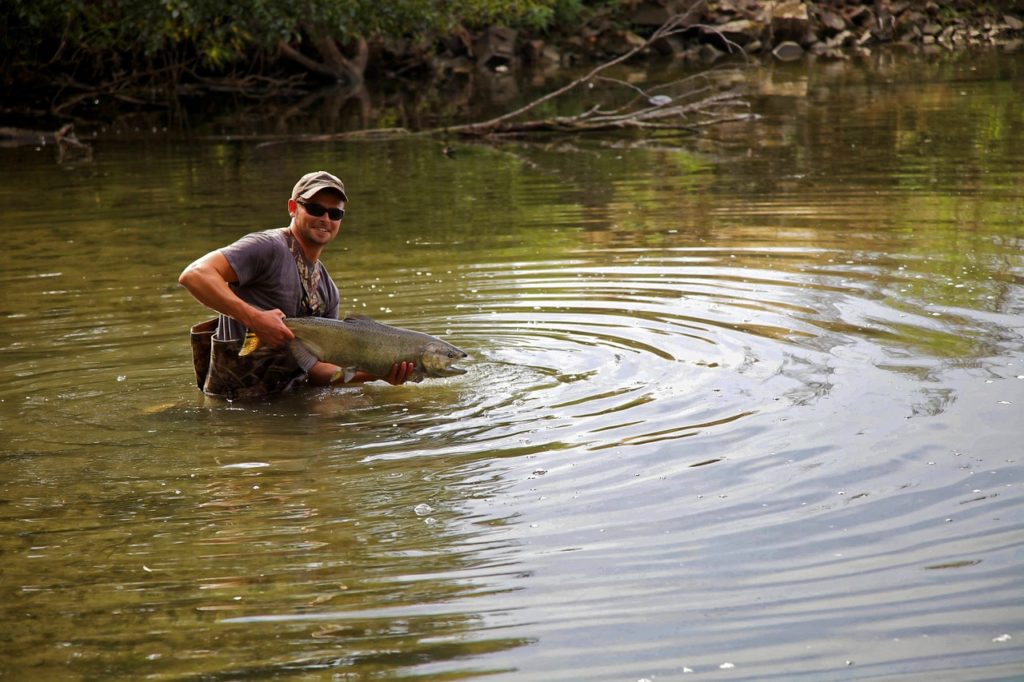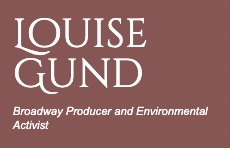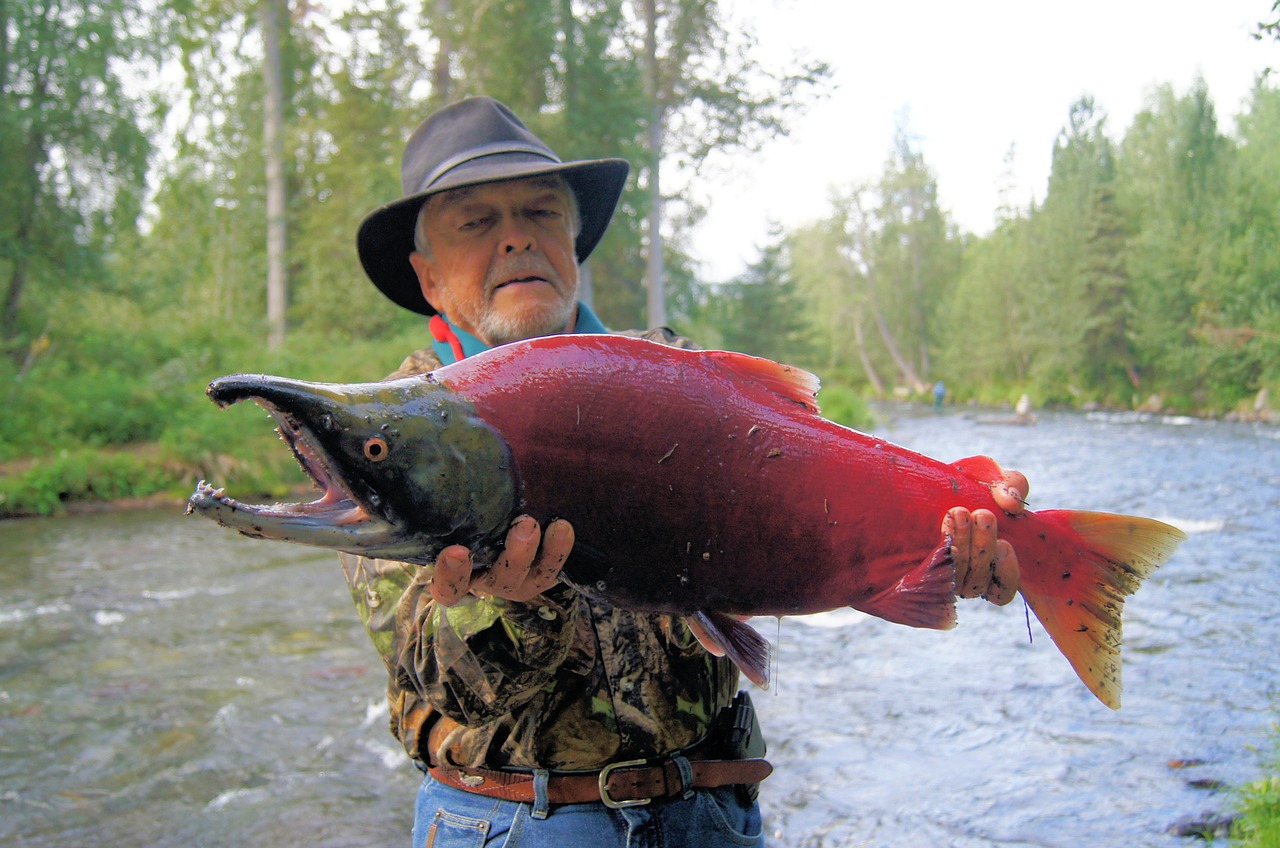Over the past few decades, it’s become clear that many industries that have sustained our economy are in decline. As technology enables greater consumption, we are depleting ecosystems that were once reliable sources of food and other resources. Climate change is also disrupting these ecosystems, threatening many plant and animal species. Without strong environmental protections, the natural resources we take for granted could disappear.
The Importance of Salmon
Perhaps nowhere is this more obvious than in the salmon fishery in America’s Pacific Northwest. In states like Oregon, salmon fishing has historically been such a vital part of the economy that its influence has permeated the cultural perspective of the area as well. This perspective is now on shaky ground as the salmon is under threat. Salmon species are also an environmentally critical link in the Pacific Coast ecosystem.
In spring 2019, the Columbia River fishery reported shockingly low salmon and steelhead trout returns: figures were half of the 10-year average. Experts estimate that the coho salmon population in Oregon has declined to just 5 to 10% of historic levels. Coastal fisheries such as those that have played a crucial role in defining Oregon’s identity as a state find themselves in graver danger than ever. Even as early as 1996, the decline of the Columbia River salmon fishery had eliminated as many as 25,000 jobs.
As is the case with so many environmental issues, we’re at a turning point. We know something must be done, and there are dedicated, talented people devoting their lives to protecting salmon in the Pacific Northwest. However, it’s a mistake to take anything for granted, and Congress should act to help.

Historical Context
Coastal coho salmon in Oregon have been under the protection of the Endangered Species Act (ESA) since 1998. Certain populations of chinook salmon are also considered endangered. Moreover, in 2000, Congress established the Pacific Coastal Salmon Recovery Fund (PCSRF) in order to mitigate threats to salmon and steelhead on the West Coast. The PCSRF has extended financial support to conservation projects in Oregon, as well as in California, Washington, Idaho, and Alaska. Fishing for salmon is an especially important tradition in Native Pacific Northwest culture, and tribes in the region have also received support from PCSRF, along with state-level agencies.
The salmon fishery in the Pacific Northwest also supports jobs and contributes significantly to the regional economy. In Oregon, the value of commercially caught chinook salmon totaled $5 million in 2017. Recreational salmon fishing also has an economic impact, as it draws people to the Pacific Northwest and supports a segment of the regional tourism industry. In Washington, the total economic impact of salmon fishing in Puget Sound alone (including commercial and recreational fishing) is about $100 million per year. As salmon populations continue to decline, there’s even more urgency to restore the fishery to the level of economic and ecological health it once enjoyed.
What’s Being Done?
The PCSRF was intended from its inception to be a conservation effort based on established science and community collaboration. It has leveraged funds to support groups working to save Pacific Northwest salmon by disbursing grants totaling $1.3 billion, as of October 2017. As well as building toward a future where salmon and steelhead populations aren’t so threatened that they need ESA protection, these funds have provided a lifeline to local communities whose livelihood and cultural history are threatened by the decline of salmon.
There are two main ways the Pacific Northwest salmon fishery is being helped by PCSRF grants. First, the funds have enabled projects that have restored natural habitat for salmon—a key aspect of conservation. As of October 2017, PCSRF funding has enabled the restoration of nearly 1.1 million acres of salmon spawning and rearing habitat in rivers, creeks, and streams. The funds have also allowed salmon to access more than 10,550 miles of streams that were previously inaccessible to them, due to degraded conditions.
However, the second way PCSRF is supporting the salmon fishery might yet prove to be still more consequential. By instigating large-scale conservation efforts and liaising with organizations from several different sectors (such as land trusts and watershed groups), PCSRF is having an impressive trickle-down effect. By focusing primarily on the rural communities who stand to be the most negatively impacted by the threat to salmon, PCSRF-supported projects have generated nearly $1 billion and more than 6,000 jobs from 2001 to 2010 in Oregon alone.

What Does the Future Hold?
The Trump administration has attempted to cut funds for the PCSRF for the third time in as many years, despite the consistent and significant success of the project thus far. If the administration succeeds in this effort, the initiative could see an extreme reduction in the work it has been facilitating, which could result in potentially disastrous economic and social setbacks for communities who rely on fishing to sustain themselves.
All hope is not lost, however. Hopefully, members of Congress from both sides of the aisle recognize the importance of salmon to both the ecosystem and the economy in Oregon and throughout the Pacific Northwest. They can vote to ensure there is funding in the federal 2020 budget for the PCSRF. Politicians at the state and local levels, businesses, and individual people can also do their part to promote salmon recovery by supporting the many other organizations working to protect this keystone species.

